One afternoon in November 2019, a yearly First Nations summit on clean energy had just broken for lunch at the Hyatt Regency Hotel in Vancouver. Cole Sayers, a member of the Hupačasath First Nation, was outside the doors of the conference room, holding a cup of lukewarm coffee, in conversation with a group of attendees who, like him, were fed up.
Over the previous two decades, many First Nations in B.C. had developed expertise in renewable energy. They’d invested a lot of effort, money and hope in the government-fostered promise they could feed a growing market for their power. Now, as the day’s proceedings made clear, the door had been slammed shut.
What would it take to pry it back open? That was the question on the mind of Sayers. He hadn’t yet formulated his answer, but he knew what stood in the way — the monopolistic role played by BC Hydro, the province’s power utility.
Formed in 1961, the crown corporation generates and transports power to most of B.C.’s population. Much of that electricity flows from a string of mega-dams that triggered unprecedented economic growth for some while flooding territories of First Nations and transforming their ways of life, including that of the Kwadacha Tsek’ene whose story is told in the first of this two-part series.
For First Nations wanting to build their own power projects, getting a contract to sell energy to BC Hydro has been the only game in town. And many did succeed in sealing deals. Over the past two decades, at least 79 nations have become owners or partners in grid-connected run-of-river, wind and solar projects across the province.
But in 2017, when the NDP greenlit the third dam on the Peace River, Site C, those contracts virtually dried up. Suddenly, projects were in limbo.
Stalled prospects remained the message at the Hyatt conference three years ago — one that frustrated Sayers but also galvanized him. “That was the moment,” he recalled, when he decided, “We need to organize. We need to do something.”
And when the next year’s conference rolled around — this one virtual because of the pandemic — Sayers had done the research and organizing needed to win a mandate from attending nations to move forward with a big, bold idea.
It goes like this: First Nations would generate, procure and manage a dedicated slice of B.C.’s electricity needs on their own terms through a new organization, a First Nations’ Power Authority. And nations would gain access to sell power on province’s powerlines, meaning that B.C. residents could one day buy their power directly from First Nations, instead of BC Hydro.
While that may sound simple, it raises many complex questions.
First, it requires legal changes to B.C’s energy laws. Second, it challenges the status quo of B.C.’s electricity system — including who owns, plans and benefits from it.
For Sayers, this conversation is long-overdue. If B.C. is blessed with abundant, cheap energy, First Nations and their territories have borne the brunt of industrialization, flooding and other impacts from its development. “Not many people know the true cost of power,” he said.
Then there is the fact that, as the climate crisis intensifies, some experts see a renewable energy boom coming to B.C. This time, said Sayers, First Nations should be part of it.
Finally, there’s the matter of putting high-minded words into practice. In 2019, the province passed the Declaration on the Rights of Indigenous Peoples Act and committed to fold its principles into laws, policies and modes of governing. Last year, B.C. launched an engagement on opportunities for First Nations in the electricity sector.
Creating a First Nations Power Authority, said Sayers, would be “a reconciliation project to help repair the injustice of previous utilities development. First Nations have the right to access the power grid,” he said. “And being denied that is wrong.”
‘There’s been no calls for power’
For Cole Sayers, mixing energy, advocacy and enterprise runs in the family. When he was three years old, his mother Judith Sayers, after a career in international law, moved her family from Edmonton to open a family law practice in Port Alberni in southwestern Vancouver Island, where she would become Chief, and eventually treaty negotiator for the Hupačasath First Nation.
At the time, BC Hydro wanted to install a gas-fired power plant near the centre of Port Alberni. Concerned about the health and climate impacts of a new fossil-fuelled energy source, Judith Sayers helped lead campaigners against the plant, and they succeeded — the project was scrapped. Wanting to provide an alternative power source, the nation commissioned research on renewable energy opportunities for the area, settling on a run-of-river hydroelectric plant for China Creek, five kilometres south from the town.
The timing was right: Gordon Campbell’s recently elected BC Liberal government was embracing independent power production. The 2002 Energy Plan barred BC Hydro from building any new generating stations except for Site C.
The Hupačasath’s Upnit Creek project was B.C.’s first commercial scale First Nations-owned electricity project to put power on the grid. After signing a 20-year energy purchase agreement with BC Hydro, the project launched in 2005 with joint ownership between majority owner Hupačasath, Ucluelet First Nation, private industry and the municipality of Port Alberni.
“Judith was a real champion, wading into what at the time was a lot of unknowns,” said Yuho Okada, president of the Barkley Project Group, a consulting company that develops First Nations clean energy projects. The project powered 6,000 homes, generating millions in revenue for the nation, and Judith Sayers became a leader in the province’s renewable energy industry, taking a seat on the board of Clean Energy BC and working with various nations across the province to develop projects.
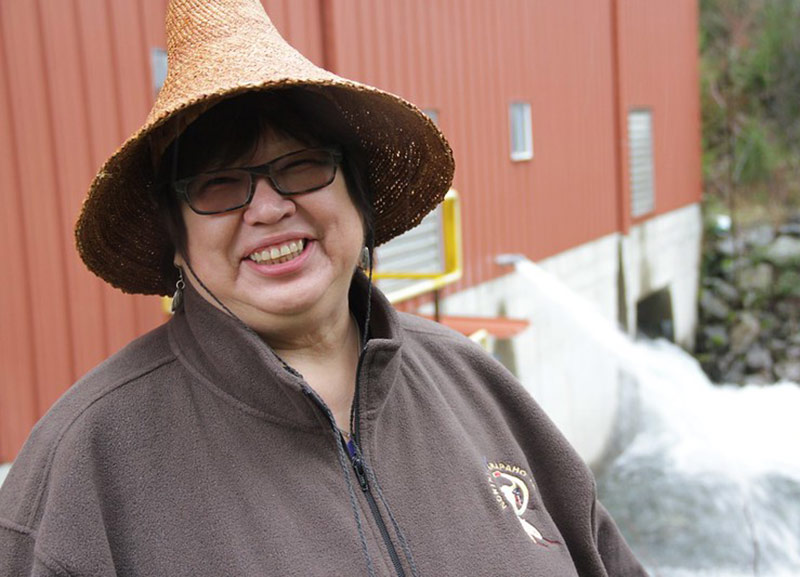
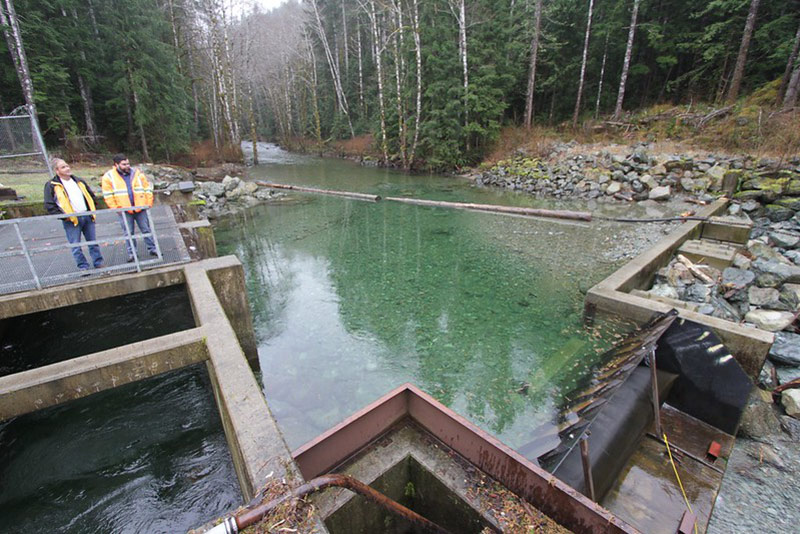
Other early adopters included the Taku River Tlingit First Nation’s run-of-river hydro project in the town of Atlin in 2009, and the Tla-o-qui-aht’s Canoe Creek project that began a year later.
That year, 2008, brought another major boon for the industry — the standing offer program, a ready-made package for clean energy producers to sell their power to the grid at a set price, eliminating the need for bidding wars amongst proponents. Projects could now access financing knowing that BC Hydro would buy their power.
But the heyday for independent power wouldn’t last long.
In 2010, Campbell announced that his government would pursue the Site C dam. Official enthusiasm for small scale producers waned at the prospect of a major influx of power to hit the grid.
Campbell’s BC Liberal party successor, Christy Clark, proclaimed B.C. would enter a prosperous new era by building up a new industry of liquefied natural gas for export. Her vision included the fracked gas fields of northeastern B.C. connected by pipelines to super-chilling facilities on the coast. At one point over 20 proposals for plants in the province pointed towards a province awash in shapeshifting gas.
The entire infrastructure would require massive new amounts of energy to operate. Clark aired the notion that some of that power could be First Nations-owned renewable energy. That, in fact, was part of the Clark government’s early branding strategy. B.C., she claimed, would offer a more ethical and green way to extract and ship methane.
But it was soon apparent that LNG producers planned to use their own natural gas rather than costlier renewables to power their liquefaction process, and the province walked back its earlier promises. Reading the room, the Canadian Wind Energy Association withdrew from the province in 2016, citing the lack of opportunities.
In June 2017 the John Horgan-led BC NDP gained power. In December it approved the Site C dam project, and began dismantling the standing offer program soon after, freezing purchases from any new independent producers save five ongoing projects with substantial First Nations’ involvement.
By 2018, almost all opportunities for new renewable projects were obliterated, with far-reaching impacts.
A survey conducted five years ago counted around 40 First Nations-owned, grid-connected projects in operation, many of which are now on the rocks. It also found 48 already under construction, 77 projects that wanted to move ahead, and 250 projects in the pre-planning phase that had been stalled.
The province “didn't take into consideration the size of the clean energy industry in B.C.,” said Judith Sayers. She noted the province bolstered other sectors, like fish farming, with funding and support because of the revenue they generated for government. “When it came to clean energy, they couldn’t care less,” she said.
Today, added Sayers, not much has changed. “There’s been no calls for power.”
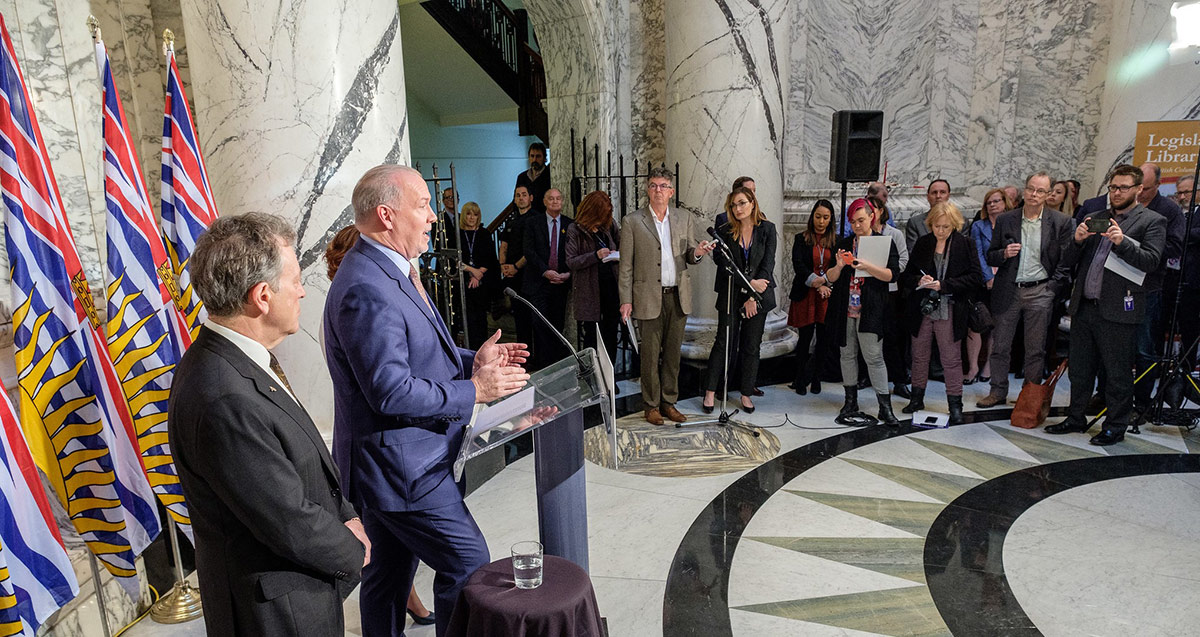
The Hupacasath’s own project now hangs in the balance, waiting to hear whether its contract will be renewed when it expires in 2025. If not, the nation will have little chance of selling its existing infrastructure, said Sayers. “Who’s going to buy a project that has no financial returns on it?”
Adding to that is the fact that Utilities Commission Act makes it impossible for First Nations to sell power beyond reserves or designated treaty lands, a limitation that makes the economics generally prohibitive (see sidebar).
“First Nations started talking amongst themselves,” she said. “‘How can we fix this situation?’” That’s when conversations about First Nations power utilities — bodies that could sell power produced by First Nations — began. “BC Hydro doesn't want our power, you know. Who else does?”
‘It’s erasure’
Cole Sayers strolled through Vancouver’s Kitsilano neighbourhood last December as a light rain turned to deluge. He shrugged. “I don’t mind it.” He pointed to the electrical powerlines above his head. “There's a lot of power in that water.”
Wearing a wool overcoat over a black T-shirt, Sayers spoke calmly, his tall frame moving down the puddling sidewalk as he discussed the personal path that led him here.
Sayers and his family learned about the costs of B.C.’s hydropower early on. There is a photo of his great grandfather, he said, standing next to petroglyphs imprinted on rocks in his territory. Those rocks are now submerged by a hydroelectric dam. “We don’t know where they are,” he said. Once, during treaty negotiations, the nation tried to find the markings in order to help prove their case. They were unsuccessful. “It’s erasure,” said Sayers.
“Infrastructure is how the state makes itself known,” he said, explaining that projects like dams and railways helped create B.C.’s national identity at the expense of nations like his own.
Sayers’ elementary school was housed in an old residential school — the same one where his grandmother suffered abuse. The dorms are gone now, but the school building remains.
Determined to find answers to the pain he’d witnessed from an early age, Sayers pursued a degree in business. “I thought capitalism was going to save us.”
He then transferred to the former Indigenous governance program at the University of Victoria, which exposed him, he said, to “heavy hitters” in the world of Indigenous rights and jurisdiction. "It was a great environment for intellectual development."
After graduation, Sayers worked as a researcher with the Toquaht Nation before tracing his mom’s footsteps into the renewable energy business. “It felt like a lot of responsibility,” to do so, said Sayers. His aunt, Brenda Sayers, is a former Green Party candidate and represented the Hupačasath for the Canada-China FIPA court challenge. His sister, Alana Sayers, is a writer with a PhD in literature. Sayers is quick to point out that he’s been influenced by the courageous women he grew up with.
In 2017, Sayers took a position at the New Relationship Trust, a non-profit that funds First Nations initiatives. There he oversaw their clean energy programming, which administered millions of dollars’ worth of provincial and federal grants to Indigenous communities. Most of the support was limited to remote, off-grid communities building small-scale renewable projects. It’s important work, said Sayers, because many rely on diesel-powered generators, which are expensive and polluting to run. But when it came to grid-connected projects by First Nations aiming to sell their electricity, those doors were closed by the province and BC Hydro. “They don’t want other players in the game,” Sayers concluded.
A monopoly with ‘huge’ debt
It didn’t help that under the BC Liberals, creating a market for private or “independent” power had sparked a lot of controversy, even dividing environmental advocates who might be assumed to embrace ways to create more clean energy.
Most IPP projects consist of run-of-river hydro projects, which divert river water into turbines before getting redeposited downstream, and that has undeniable impacts on river systems. Some early critics projected the industry would lead to death by a thousand cuts — less harmful than mega hydro dams, but still liable to create a large cumulative impact by reducing river flows, spiking water temperatures and damaging fish habitats. And transmission lines built to service the projects deforested land in their path.
Two decades ago, most run-of-river projects (below a certain size threshold) weren’t required to undergo environmental assessment, and there was little planning in place to quantify the cumulative impacts of such a large new industry imposed on B.C. rivers. Okada notes that this has changed in years since. “Regulations and the knowhow is dynamic and changing all the time,” he said, pointing to a recent run-of-river project he worked on that is built above a waterfall so fish cannot reach it. Still, he acknowledged that some impacts on the river are inevitable.
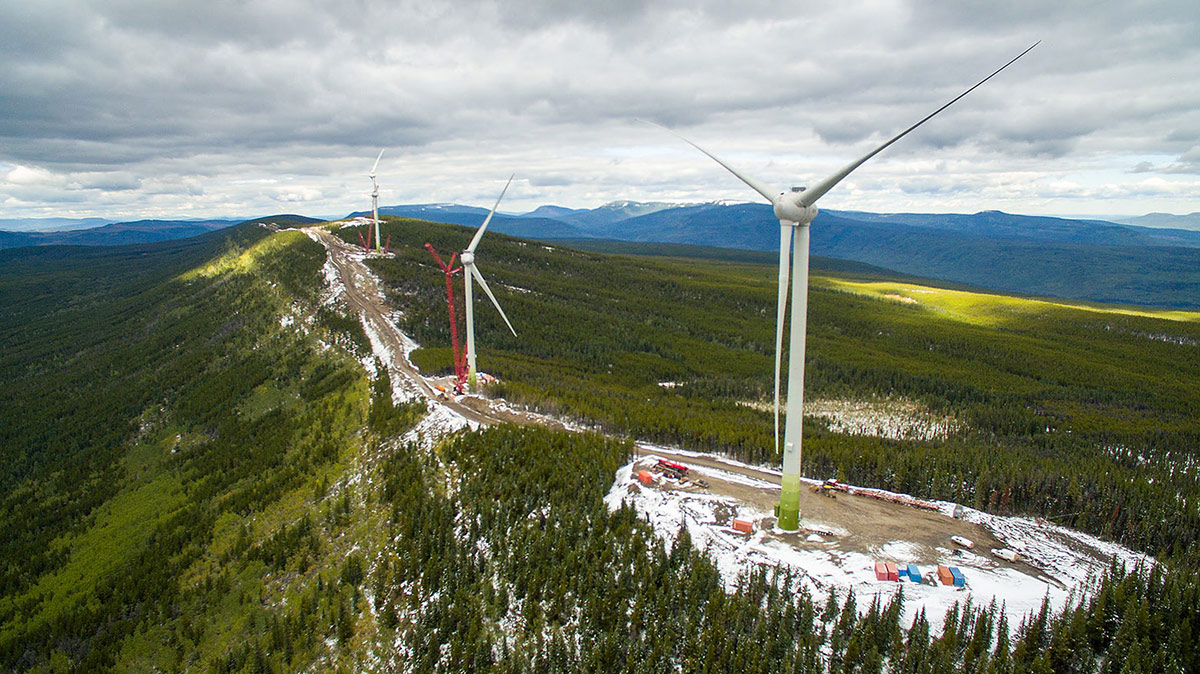
The industry’s track record with First Nations has also been rocky. In its early days, private power companies encroached on Indigenous territories and purchased water licenses without nations’ knowledge or consent. In 2008, the Union of BC Indian Chiefs called for a moratorium on private power facility development until a consultation process had been established. But over the years, said Okada, those relationships began to improve as private developers increasingly came to partner with nations on projects that affected them, or at least offer up a greater share of the benefits. Today, nations’ involvement with private power is wide-ranging, with some nations owning shares of projects, and others receiving various portions of revenue.
Critics also zeroed in on who profited most from the Campbell government’s IPP-friendly policy, and who picked up the tab.
In 2019, the province released their report, "Zapped," claiming that independent producers, including First Nations, were a “sweetheart deal for some,” costing the public $16.2 billion over two decades.
The report claims that the BC Liberals paid too much for “energy with the wrong profile” and that it “undertook these actions at the direction of Government."
Criticisms mounted about the BC Liberals’ cozy ties to the IPP sector, including receiving sizable campaign donations from companies granted power contracts. Others noted that the majority of IPP developers consisted of large companies based outside of the province, and that some locked in high rates for the length of their contracts.
And those rates varied considerably. According to BC Hydro’s most recent annual report, power from IPP’s cost an average of $96 per megawatt hour — but some small, family-run projects report receiving much less. Projects are barred from indicating how much they receive per megawatt hour, making the details of each contract opaque.
Defenders of the IPP strategy for producing more renewable energy acknowledge that the price per kilowatt is higher than for power from BC Hydro’s dams — many of them built half a century ago. Water rentals to produce hydropower cost only $6 per megawatt hour, but that doesn’t include the costs of dam building, maintenance and operation.
And they point out that when the Zapped report calculated that $16.2 billion loss from IPPs, it did so by comparing their price to what it costs to purchase power from the U.S. via the Columbia Basin Water Hub (think of a stock exchange for electricity). Power imported from the region does tend to be much cheaper than IPPs — this year it averaged around $40 per megawatt hour. However, in the 2000 U.S.-energy crisis it spiked to $200 per megawatt hour. Imported energy could get more expensive and uncertain, as states like California face climate impacts like wildfires and droughts. And, power from the U.S.’s coal and gas-laden grid is definitely more polluting.
Still, BC Hydro has good reason to be concerned about its bank balance, even in the short term.
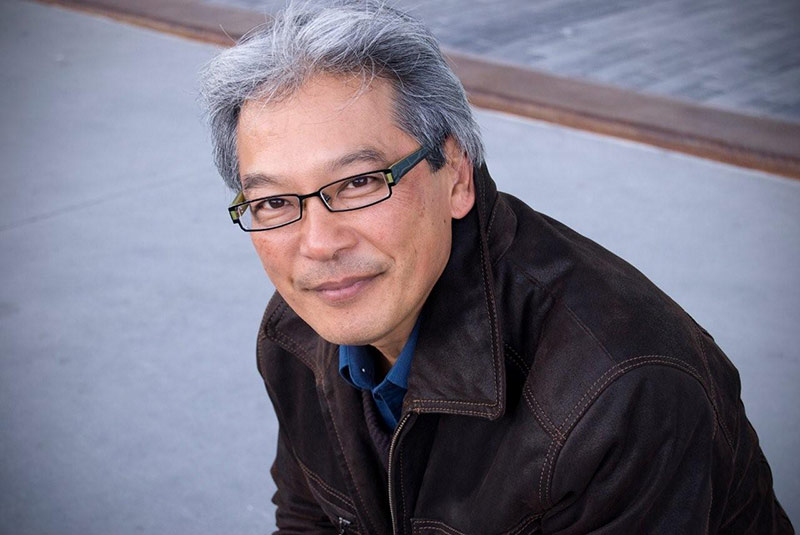
The crown corporation is “hampered by its debt — which is huge,” according to Eoin Finn, a retired KPMG partner and director of the Pacific Electricity Ratepayers Association, who notes the utility has four times the amount of debt than it does equity. As BC Hydro’s sole shareholder, the province decides how much money it takes from BC Hydro every year. Leftover debts often go into deferral accounts — debts projected into the future. In 2019, the province transferred $1.1 billion from BC Hydro’s debt load onto taxpayers.
Ultimately, said Paul Kariya, senior policy advisor with Coastal First Nations, that debt means the utility calls the shots. “BC Hydro really ends up telling the government how it's going to be,” he said, “That's just reality with a utility that is so powerful.”
Don’t expect BC Hydro’s financial position to get better any time soon. Last year, the province announced that Site C would be the most expensive dam in Canadian history, jumping from $10.7 billion in 2017 to $16 billion in 2021. At that price, the cost of Site C power will be at least $144 per megawatt hour, according to Finn, far surpassing the price of independent power.
‘First Nations would be competitive’
To arguments that IPPs cost too much and put money into private hands, Cole Sayers has a few things to say.
First, he notes that First Nations intend to sell their power for reasonable rates. “First Nations would be competitive. And we want to ensure that affordability is top of mind,” he said. Indeed, the cost of renewables like wind and solar have dropped substantially since many IPP contracts were negotiated — a 70 per cent decrease for wind power and 89 per cent for solar in the last decade alone. When the BC Utilities Commission reviewed Site C in 2017, it found B.C. could produce the same amount of power with renewables like wind, for almost half the price — $8.8 billion.
But Sayers also draws a firm dividing line between First Nations and private interests — a distinction he says often goes unrecognized. “We’re not private power,” he said. “We’re First Nations. We have our own values around how we want to produce power and sell power.”
But, assuming Site C does become operational, won’t that extra supply of power ensure B.C. has all it needs for decades to come? That’s what BC Hydro claims in its most recent 20-year plan.
Except that plan assumes the province won’t meet its climate targets, which is “a confusing state of affairs,” said Dave Lovekin of Pembina Institute, an environmental think tank based in Calgary. Lovekin and Cole Sayers recently partnered on a report which found that B.C.’s climate targets require 19 to 34 per cent more electricity than the province has committed to buy in order to shift away from fossil fuels.
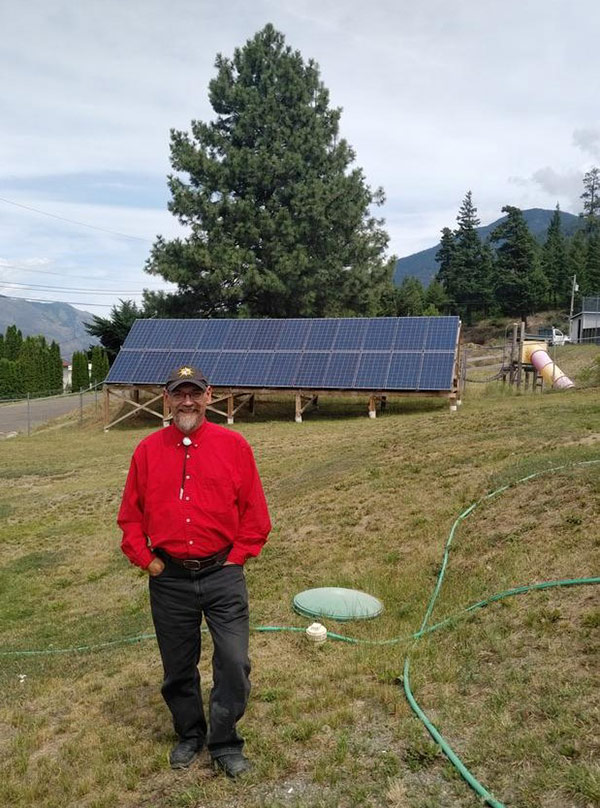
BC Hydro’s plan leaves it vague how it will ramp up renewable energy capacity if it becomes necessary to meet the province’s climate targets. Lovekin says that provides the utility wiggle room, given the financial bind it faces. “There's huge risk aversion to generating more power, whether that's through their resources or through a call for power or clean energy opportunities for First Nations,” said Lovekin.
Given the lack of enthusiasm by BC Hydro and the province for adding more energy generation, some suggest focusing on new renewable projects in the near term may be unrealistic. Nations might be better off pursuing projects to conserve energy, focusing on things like housing retrofits, says Chris Henderson, executive director of the Canada-wide network Indigenous Clean Energy. “There’s a lot of work to be done on that energy efficiency side of things.”
Sayers said he’s “a big advocate” for conservation programs. “They’re part of the picture.” But they don’t offer a sustainable revenue stream for nations. Besides, Sayers is convinced that B.C. faces a jump in electricity demand that requires groundwork laid today. “We’re going to need the power.”
‘For First Nations, by First Nations’
On a late afternoon in November, Sayers sat in his home office and kicked off this year’s BC First Nations Energy Summit over Zoom. It had been three years since the group had gathered in person at the Hyatt, and one year since Sayers had received a mandate from participating nations to investigate the creation of a power authority.
There was much to discuss with the 27 nations represented on this call. Summer saw the province engulfed by wildfires, and the day of the summit it was in the midst of a historic flood that washed away highways and homes. Climate change was working its brute force on B.C. policy, too.
“I think the work that we’re doing here is a part of the solution to that in preparing for these crises that are occurring,” Sayers told the attendees. Back at the virtual podium after a morning of speakers that included Judith Sayers, Cole Sayers made a pronouncement. “We’re launching a First Nations Power Authority that’s for First Nations, by First Nations.”
The authority would serve as a power utility, enabling nations to sell electricity to one another, BC Hydro, and the rest of the province. It would be a one-stop shop, Sayers explained, providing a go-between for First Nation renewable developers and BC Hydro, technical and management support with project design. And while he doesn't envision the authority being a utility regulator like the BCUC, it would advocate for the policy and legal changes needed to support First Nations utilities and to align the province’s electricity system with the Declaration on the Rights of Indigenous Peoples Act.
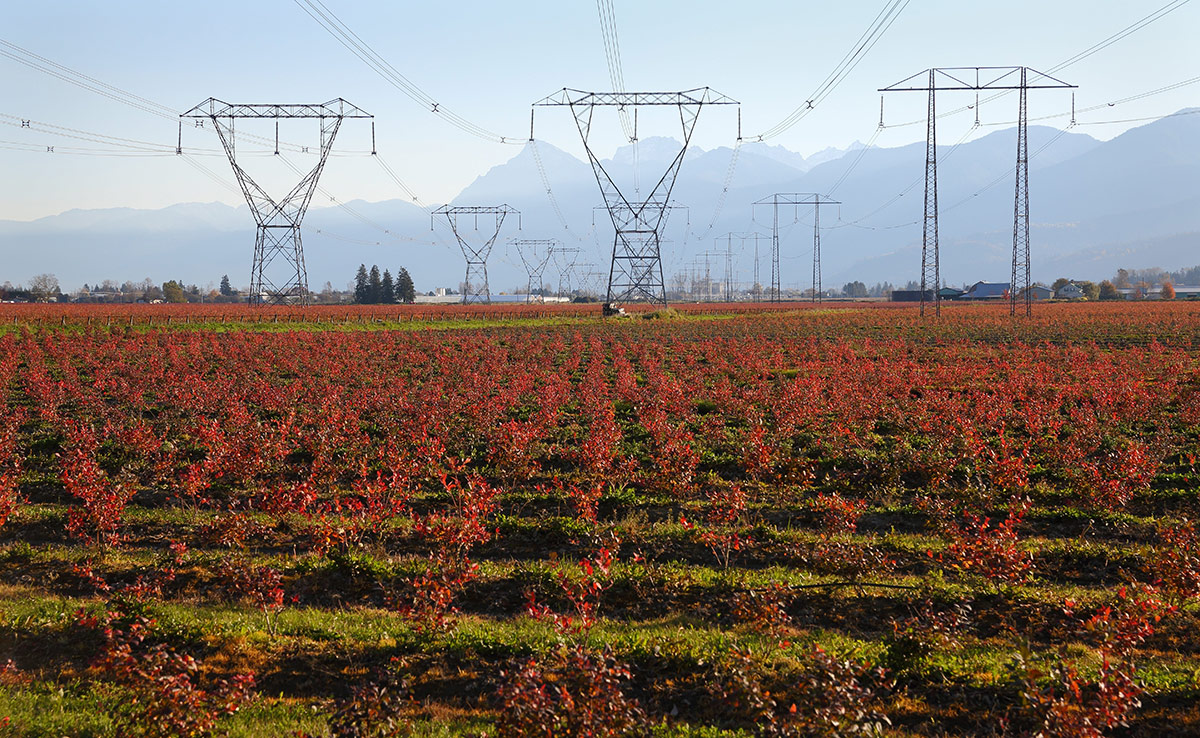
All of this takes inspiration, Sayers said, from the First Nations Power Authority in Saskatchewan, running since 2011.
But how to move from inspiration to reality? That would require the province to create two policies.
First, a “carve out” of BC Hydro’s annual power needs, which the power authority would distribute to First Nations-owned projects. If the province electrified enough to meet its climate targets and dedicated half of that generating capacity to First Nations, said Sayers, that would lead to 600 long-term jobs in communities and $8.25 billion in investment, which could come from the private or public sector.
“We're proposing a carve-out that would essentially triple the industry,” he said. “It'll be huge for First Nations.”
Second, the province would need to open up BC Hydro’s transmission system, allowing First Nations’ renewable energy projects to use its power lines, at a negotiated cost, to sell power to other First Nations and to industrial customers. “Say First Nations in the Lower Mainland want to power Amazon's new facility downtown,” Sayers said. “They should have an opportunity to have a power purchase agreement with them to sell power to their facility.”
The carve out and retail access policies would require major changes to the Utilities Commission Act to allow First Nations to sell power outside of their reserves, and across the province. “First Nations want to invest in economic development and build partnerships. So these policy options we believe can allow us to do that,” Sayers said.
Minutes after Sayers’ presentation, Murray Rankin, B.C. minister of Indigenous relations and reconciliation, appeared on the screen in a blue suit and striped tie against a backdrop of dark wood panels, ready to deliver his keynote address to the conference.
“British Columbia, the province, recognizes that many Indigenous communities view energy projects as an economic development opportunity,” Rankin began, before describing projects to reduce diesel use in remote communities, and one grid-connected geothermal project proposed by the Fort Nelson First Nation which had significant support from the federal government.
None of his remarks acknowledged the game-changing concept Cole Sayers had presented. As Rankin concluded his talk, Sayers asked the minister if he’d like to answer questions. Rankin had a muted exchange with someone off-screen, then declined the request. “All I’ll say, Cole, is that nations can reach out to us.”
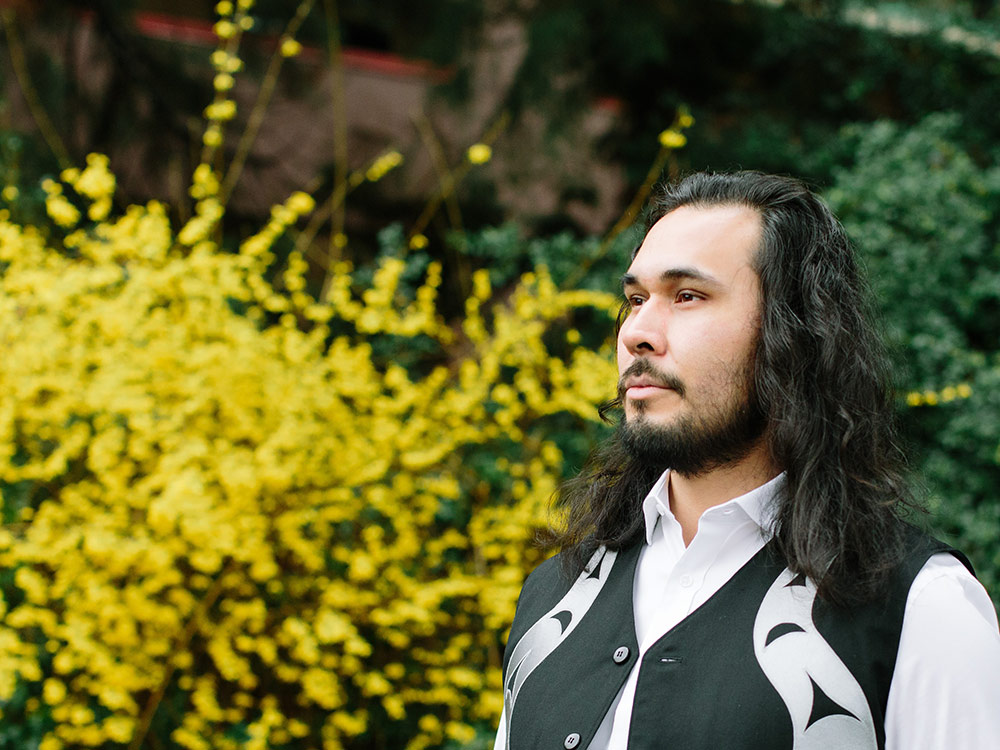
If Sayers is to take up Rankin’s offer, ideally he’ll do so with a single, unified proposal that channels nations’ various needs and concerns. That’s the challenge he is working to solve now. Nations are “generally supportive of the concept,” said Sayers. “The potential is great, but how do we get there?”
A dividing line among nations is about scale and size. Should there be one power authority, or several for different regions?
Groups like Coastal First Nations, for example, want to see a northern power authority that’s tailored to the region’s unique industries and environment. That authority might be carried out in partnership with local governments — not just First Nations.
In parts of B.C. struggling economically, “why couldn't we use power generation as a tool for revenue and for jobs?” said Paul Kariya. He suggests a regional power authority might be able to focus on regional opportunities to support collective initiatives like transmission networks, which would be too costly for one nation to shoulder on its own.
Sayers understands the impetus to regionalize. “There's so much variation in this province,” he said. But ultimately, Sayers advocates beginning with one provincial First Nations Power Authority to push for the major legal and policy changes needed to fulfil the changes nations are calling for in B.C.'s electricity system.
“I think it would be, at least conceptually, a unifying voice that can make collective actions around clear objectives, as opposed to having every nation being on their own,” he said.
That collective support is something Chief Patrick Michell of the Kanaka Bar Indian Band, or T'eqt''aqtn'mux, can get behind. “I’m all for a First Nations Power Authority” said Michell, who has spent decades developing run-of-river, solar and wind projects in his community. Michell would like the authority to take on a regulatory role, ancillary to its advocacy, to make sure First Nations utilities provide safe, affordable service.
Michell lost his family’s home in Lytton to wildfires this summer, and the town went without power for months. For Michell, an energy system made up of small renewable projects — not mega-dams — is critical for a future of climate change. “Small-scale diversification is what is resilient,” he said.
Meanwhile, the province is showing tentative signs of movement.
Early this year Sayers left the New Relationship Trust and started working as a clean energy advisor with clients including the First Nations Energy and Mining Council, the group tasked with facilitating the province’s engagement process on Indigenous clean energy opportunities, launched in November. The effort includes a working group composed of representatives appointed by the First Nations Leadership Council and the Ministry of Energy, Mines and Low Carbon Innovation.
In an emailed statement, BC Hydro declined to comment on the creation of a First Nations Power Authority, but said their organization “supports the Province’s commitment, under the CleanBC Roadmap to 2030, to collaborate with First Nations to maximize economic benefits for Indigenous communities as we transition to a clean economy.”
The province declined The Tyee’s request for an interview, but in an emailed statement, wrote that the engagement would “seek to align B.C.’s strategic clean-energy policy and legislation with the United Nations Declaration on the Rights of Indigenous Peoples.”
The First Nations Energy and Mining Council did not respond to The Tyee’s request for comment.
And how is Sayers feeling? “I think we can be cautiously optimistic.” In March the province let it be known in clean energy engagement meetings with First Nations that opportunities to sell power are tentatively on the table — for the first time in years, said Sayers. “The tune has changed. It’s not just a ‘no’ when the topic of opportunities come up.”
So far, exactly what a First Nations Power Authority would be and do is still up for discussion among First Nations and it’s not on the provincial government’s official agenda. Which means Cole Sayers remains very busy attempting to prompt what he calls “a total rethinking.”
He poses the question that drives his mission. “Do we want to be a colonial government? Or do we want to govern differently?”
Read the first in this two-part series: "Their Land Was Drowned by a Flood of Hydropower.” ![]()
Read more: Indigenous, Energy, BC Politics


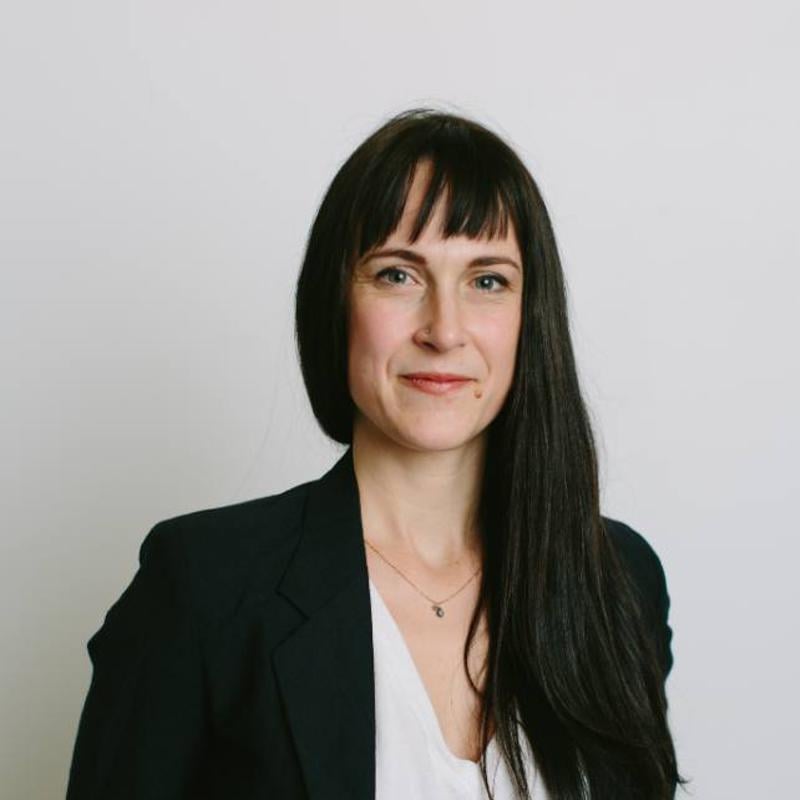
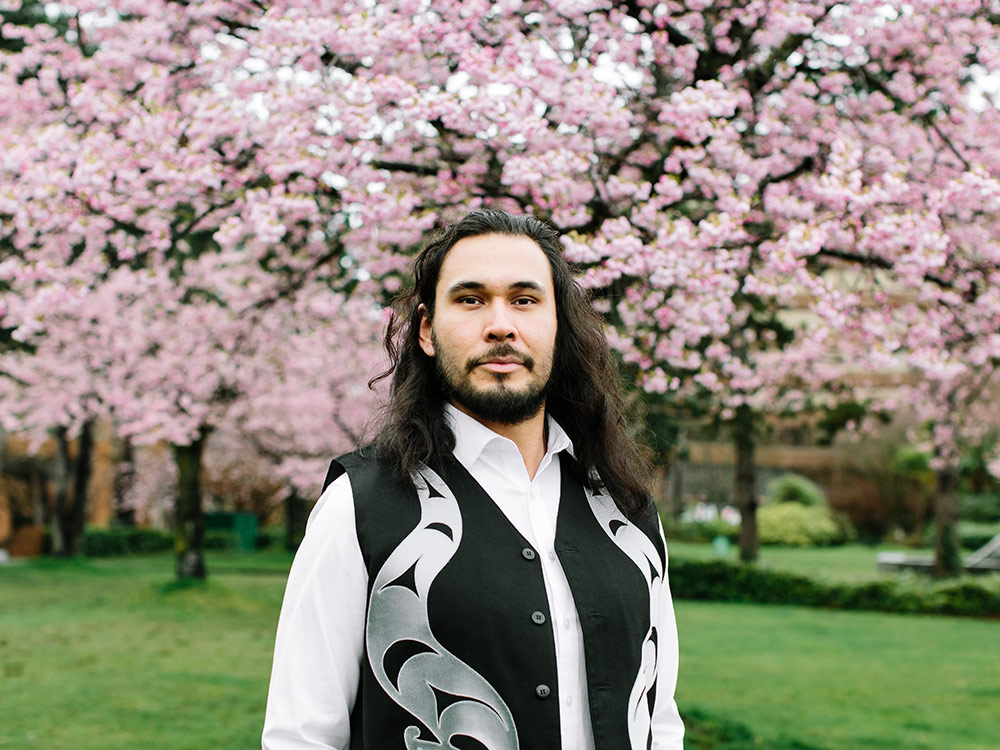












Tyee Commenting Guidelines
Comments that violate guidelines risk being deleted, and violations may result in a temporary or permanent user ban. Maintain the spirit of good conversation to stay in the discussion and be patient with moderators. Comments are reviewed regularly but not in real time.
Do:
Do not: